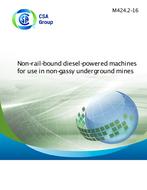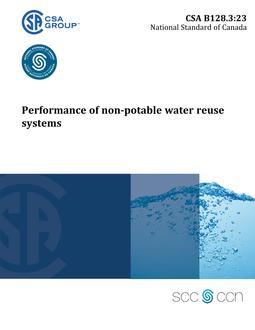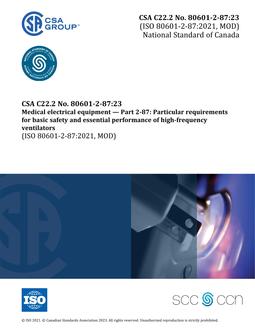
CSA M424.2-16
Preface
This is the second edition of CSA M424.2, Non-rail-bound diesel-powered machines for use in non-gassy underground mines, and supersedes the previous edition published in 1990. Changes to this edition include the following: a) The reference fuel used for the tests has been changed to comply with US CFR 40 1065.703. b) The term diesel particulate matter is used in lieu of the term particulate matter and the term also replaces the term respirable combustible dust concentration in the EQI formula. c) Emissions toxicity criterion has been updated to reflect current test practices. d) Dynamometer emissions test has been revised to reflect current testing practices. e) Assess ventilation has been revised to replace EQI factor with the dilution ratio. f) The clauses on engine exhaust system and exhaust treatment devices have been revised to reflect current engine design and exhaust technology. g) To comply with current administrative requirements, various Clauses throughout the Standard have either been updated or renumbered. CSA Group acknowledges that the development of this Standard was made possible, in part, by the financial support of MDEC (Mining Diesel Emissions Council) and Catalytic Exhaust Products Ltd.
Scope
1.1 This Standard describes the technical requirements and procedures necessary for the design, performance and testing of new or unused non-rail-bound, diesel-powered, self-propelled machines for use in non-gassy underground mines. 1.2 This Standard applies to machines of 45 000 kg mass or less, which are designed to operate on level ground at a maximum speed of 32 km/h or less. 1.3 Braking system performance requirements and proof tests are not included in the Scope of this Standard. Note: See CAN/CSA-M424.3 for brake construction, stopping performance, and test requirements. 1.4 In this Standard, “shall” is used to express a requirement, i.e., a provision that the user is obliged to satisfy in order to comply with the Standard; “should” is used to express a recommendation or that which is advised but not required; and “may” is used to express an option or that which is permissible within the limits of the Standard. Notes accompanying clauses do not include requirements or alternative requirements; the purpose of a note accompanying a clause is to separate from the text explanatory or informative material. Notes to tables and figures are considered part of the table or figure and may be written as requirements. Annexes are designated normative (mandatory) or informative (non-mandatory) to define their application.
Product Details
- Edition:
- 2nd
- Published:
- 04/01/2016
- ISBN(s):
- 9781488301742
- Number of Pages:
- 24
- File Size:
- 1 file , 1.3 MB
- Product Code(s):
- 2424415, 2424129, 2424129, 2424129


